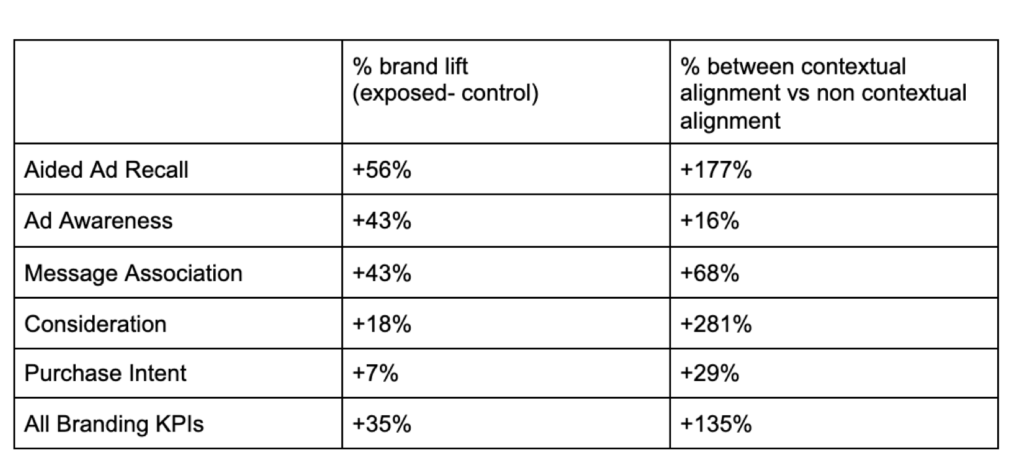Proving the Effectiveness of Contextual for a Cookieless World
by Grace Dillon on 25th May 2021 in News


In this article, Caroline Hugonenc, global VP insights and research at Teads, outlines why marketers should consider making contextual targeting their prime strategy as they prepare for life after third-party cookies.
Data privacy has been top of the agenda for most companies in the last few years, even gaining national coverage, with consumers becoming more aware of how their data is being used. Whether it’s the Netflix documentary The Social Dilemma, or Apple’s latest updates, privacy is now an international talking point.
In an attempt to address data privacy issues, by mid 2022, third-party cookies will cease to exist on Google Chrome. This step, taken by the world’s most popular browser, follows similar moves by Safari and Firefox to give people more control over their data. Yet it doesn’t come without its challenges for advertisers and media buyers.
The end of cookies the beginning of a new era
When thinking about this topic, it’s important to remember that while cookies have been a consistent part of online advertising for a long time, the ecosystem is not dependent on them. Cookieless does not mean advertising less, or less personalisation or relevancy. It simply means two things: firstly the need for a transition towards responsible and sustainable advertising; and secondly, it’s time for non-intrusive personalisation which prioritises user experience and trust as the new normal.
If we assume the first point as a given, then we need to consider how to approach non-intrusive personalisation. One such way is via contextual solutions.
Why should contextual alignment matter?

Caroline Hugonenc
It’s worth pointing out that targeting ads by using the content that they’re shown alongside doesn’t just benefit brands, but can improve user experience as well. Ads that are contextually aligned make sense to readers. Once someone decides to read an article (whether it’s about honeymoon plans, the latest tech release, or a piece of local news), they’re in a certain mindset. Aligning ads with that mindset will help amplify their message, and therefore create real uplift and impact for a brand’s campaign. It feels more in tune with the consumer’s values and interests, without making them feel concerned that their personal data has been shared with too many additional parties.
What are the main challenges to overcome when it comes to Contextual?
When the third-party cookie is made redundant, many will be turning to contextual as a solution for agencies and advertisers. But using context to maximise the impact of advertising is not easy to do, with a few key challenges in particular to be aware of:
- Accuracy. Many contextual solutions today rely heavily on keywords, which makes sense at a glance. But over-reliance on single triggers can lead to false-positives and questionable accuracy that wouldn’t match the results seen in this study.
- Granularity. Broad contextual targeting can prevent the amplification of the marketing message or proper engagement with the right audience.
- Placement. Most contextual today exists across UGC content, which inherently has issues around accuracy and standardisation. This is in stark contrast to professional content, which has long had agreed standards and third-party solutions.
- Actionability. It’s one thing to have a partner who can outline the benefits and implement an overall use case, but using contextual beyond the obvious will be an important distinction when evaluating contextual partners. Not all platforms will be able to go beyond intuitive planning and move towards actionable insights.
Testing media partners across all four of the above is critical for advertisers looking to leverage contextual as part of their planning strategies in future. Partners who have a proven track record will of course fare better, but scale is also important when it comes to context. Those partners who are processing large volumes of content, over a long period of time, will be best placed to understand content consumption and, therefore, the audiences that are reading them.
But is contextual targeting really effective?
Consumers have evolved to anticipate disruptions over recent years which has led to greater battles for attention among advertisers, who view attention as a valuable commodity in driving KPIs. As Bournemouth University’s ‘Attention Please’ white paper notes, quality attention is not best measured by time spent viewing, as “we routinely spend lots of time doing things without paying much attention.”
This is why we have been conducting AB tests using our proprietary Brand Pulse solution to evaluate the impact of contextual targeting on advertisers' KPIs. Our Brand Pulse methodology compares answers (up to) 3 questions served within our inventory on a control versus exposed basis.
For the contextual AB tests, we essentially run two Brand Pulse tests - one with contextual targeting and one without - and then compare the difference in brand uplift. For example, if the brand uplift for ad awareness in the non-contextual study was 7%, and the ad awareness uplift using contextual targeting was calculated as 13%, the brand uplift of contextual targeting would be calculated as 86%. While our testing is in the early stages, the results of our contextual testing prove exciting:

The above results are based on data from 8 different campaigns across verticals and regions, and an average has been taken.
Contextual targeting should no longer be considered as a plan B, but as a true solution to deliver media effectiveness.
Conclusion
As the cookie is removed as a targeting tool, media buyers are facing the next evolution in digital. So with this study, we’ve looked at one of the key solutions in the marketplace that delivers a level of continuity.
Contextual targeting can feel like a deprecated and old approach, but we’ve shown that the technology has evolved to make it highly viable and worth consideration. Over time, improvements have been made that allow us to solve the main challenges of accuracy, granularity, alignment, placement and actionability.
This study has confirmed that leveraging contextual alignment with a partner who has the right depth and breadth of technology can deliver outstanding media effectiveness
ContextualDataPost-CookiePrivacyTargeting








Follow ExchangeWire